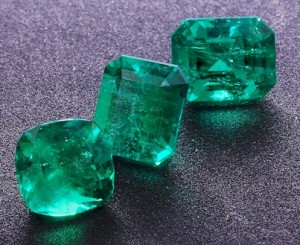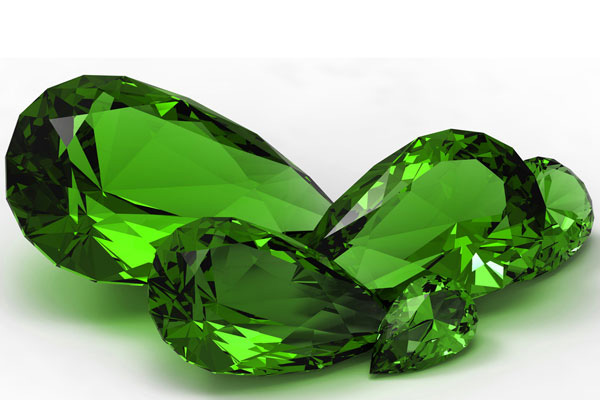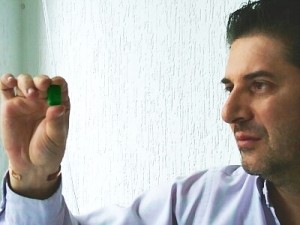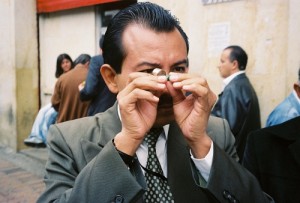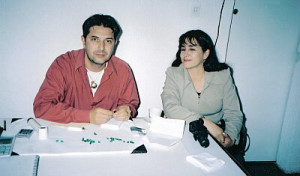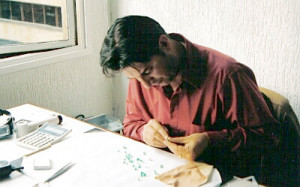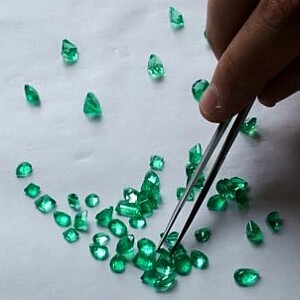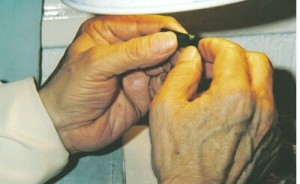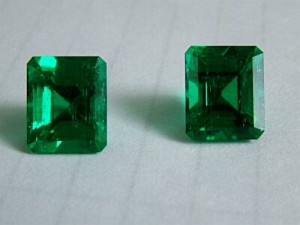Gems are found in almost all types of rocks, although with different frequency in each other. If taken together, they probably constitute the group of minerals that best represent the variations in pressure and temperature that can give rise to the different types of known deposits in the earth’s crust. They can be formed by primary crystallization from acidic, intermediate, basic and ultrabasic magmas, by recrystallization in metamorphic rocks, by weathering and dragging of pre-existing rocks, by chemical precipitation, by organic action and by the combined action of all the previous processes.
Types of deposits of the main gems.
Excluding diamonds, which alone constitute 90% in value of all marketed gems, and pearls, which today are practically all cultivated, the gems are distributed in the different deposits as follows:
Approximately 25% of all gems have an igneous origin, mainly pegmatitic.
30% can be found in metamorphic nesting rocks, whether they are calcareous or non-calcareous.
Another 30% corresponds to deposits of aqueous origin (hydrothermal, surface circulating water, etc.)
15% to gems of organic origin (amber, coral, ivory, etc.).
Geographical distribution of the main gems.
From a geographical point of view, all continents have important deposits of gemological material:
In Asia there are the most important ruby deposits, especially in Mogok and Hong-Hsu ( Myanmar, former Burma ). In Southeast Asia (Thailand , Myanmar, Indochina and Sri Lanka) are, in turn, the most important deposits of sapphires , spinels and zircons , in Kashmir (India) the best sapphires have appeared, from Afghanistan stand out their exceptional lapis lazuli, large jade deposits are found in Myanmar and China , while historically, diamond and many varieties of quartz have had some of their main deposits in India . In Siberia (Russia) there are important deposits of diamond, chrysoberyl and many other gems.
The most important and varied stones found in South America are found in the Brazilian shield. The State of Minas Geraes is justly famous for its abundance and variety in gems; diamonds, topazes ,emeralds, aquamarines, morganites and other beryls, spinels, garnets, kunzites, tourmalines, quartz of all varieties and practically all pegmatitic gems, as well as many of the metamorphic ones appear.
Spain is a country, as a whole, poor in gems.
- It lacks diamonds , which have been unsuccessfully investigated in the ultrabasic massifs of Ojén and Carratraca (Málaga) and in the ultrapotassium volcanic rocks of Jumilla (Murcia). Detailed gemological research has been published by various authors (García Guinea, Galan).
- Beryls are frequent, but not gem quality.
- Some emeralds , of very little gemological value, have been found in the complex of Lalín (Pontevedra).
- Also blue-green aquamarines , some large, in Pereña and other towns in Salamanca .
- There seems to be no corundums or spinels of gem quality.
- Tourmalines , abundant in the granitic massifs of the Western Peninsula, are always black (chorlo) and therefore have no gemological value.
- Colorless and blue topazes have been found in the Valle de la Serena (Badajoz), but they are far from the value of the imperial topazes of Brazil.
- Citrine and smoky quartz of large size and good quality have been found in Villasbuenas ( Salamanca ) and variscita in Palazuelos de las Cuevas (Zamora).
- Garnets in various locations ( Níjar , Salamanca , La Coruña , etc.).
- Some agates and chalcedony of a certain beauty and few other things.
In the United States of America there are important deposits of sapphires, garnets, spodumene, tourmaline, turquoise, topaz, red beryl and other gems. In Mexico , fire and noble opals are famous, as well as amethysts from the state of Guerrero. The topazes of San Luis Potosí also stand out, as well as the Nephrites and Obsidians .
Africa is also an extraordinarily rich continent in gems. There are diamonds in great quantity and with gem quality in South Africa , Ghana , Angola , Bostwana , Namibia , Sierra Leone , Democratic Republic of the Congo , Tanzania and other countries of Central and Southern Africa. Chrysoberyl, emerald, garnets, sapphire and ruby, tiger’s eye, tourmaline and zircon in Zimbabwe , South Africa , Kenya and Tanzania . Olivine and turquoise in Egypt . Madagascar is very rich in quartz, feldspar, garnet, scapolite, sphene, spinel, spodumene, beryl and many other gems.
Finally, Oceania is also a very rich continent, although the discoveries are more recent. Australia is one of the world’s leading producers of diamonds (highlighting, among others, the rare and valuable “fantasy” diamonds), and has large deposits of sapphire, opal, spinel and turquoise .

